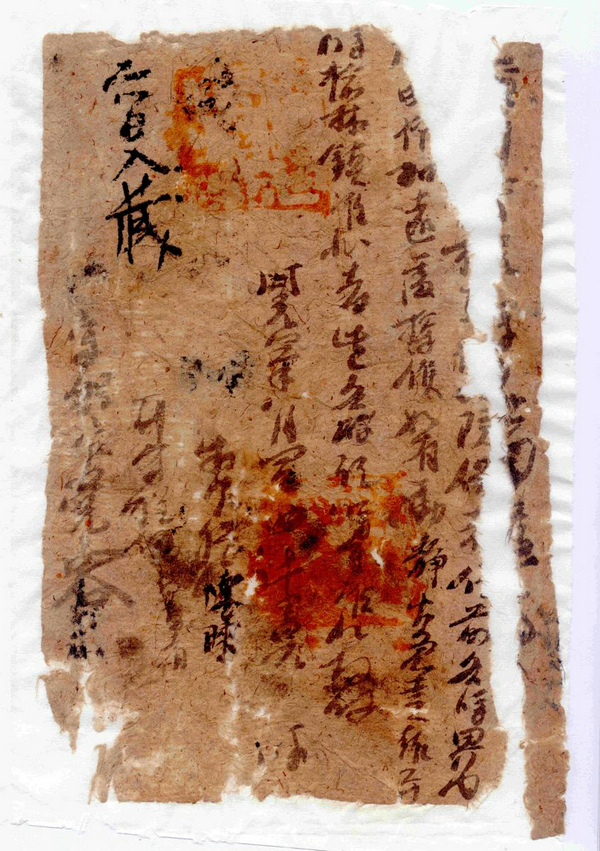 |
|
Paper documents unearthed at the site of the Kiyakkuduk beacon tower. [Photo/Xinhua] |
The path used to be an important section of the ancient Silk Road that led to Loulan, also called Kroraina, one of the pivotal stops along the Silk Road. It became less popular with merchants in the Tang Dynasty after the city of Loulan was buried in sands.
At the beacon tower ruins, archaeologists unearthed more than 700 paper documents and wooden tablets, which showed that soldiers at that time took turns to patrol, observed the merchants passing by along the Loulan path, collected military information and guarded the tower.
Garrison regulations inscribed on wooden tablets stipulated rules like the use of "peace fires", a fire signal sent out regularly to indicate everything there was normal.
Three semi-basement rooms were also unearthed at the western side of the tower, which were believed to be a facility for soldiers to escape the summer heat.
"Waterways nearby had already dried up and sandstorms often hit the area where no tall trees were grown. The ground temperature may have exceeded 50 or 60 C," says Hu. "The semi-basement rooms may have served as the only site for soldiers to beat summer heatwaves."
Abundant bones of animals, such as deer, boar, swans and fish, were also unearthed, indicating that the soldiers hunted for food as their grain supplies may have been insufficient, Hu says, adding that they also grew millet themselves on nearby farmland.